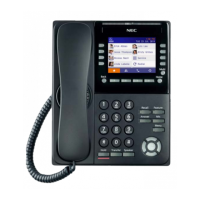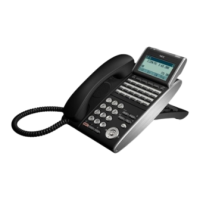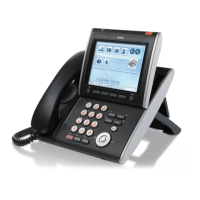Issue 4.0 UNIVERGE SV8100
2 - 2
In the ACD Group Worksheet on page 2-3, in the Member Extensions column,
enter the member extensions for each ACD Group.
If an extension is a member of more than one ACD Group, ensure that extension is
active in only one ACD Group during a particular Work Period. Refer to Assign
Extensions for Each Work Period on page 2-7.
The Sample ACD Group Worksheet on page 2-3 shows extensions 105, 107,
117 and 139 in ACD Group 1. Extensions 109, 111 and 115 are shown in ACD
Group 2.
2. Choose an ACD Master Number.
The ACD Master Number is the extension number for the ACD Group. Calls
transferred to an ACD Master Number enter that ACD Group and are routed to
the group member extensions accordingly. Although the master number can be
any valid extension number, it is recommended you choose a number that is not
in close sequence with those numbers typical for that group of member
extensions.
In the ACD Group Worksheet on page 2-3, enter the Master Number for each of
the ACD Groups. The sample worksheet below uses 3998 for ACD Group 1 and
3999 for ACD Group 2.
3. Enter an ACD Group Name.
In the ACD Group Worksheet, enter a name for each group. The sample
worksheet below uses Tech Service for ACD Group 1 and Customer Support for
ACD Group 2.
4. Set the Skip Time.
When a call comes into an ACD Group, it rings each available ACD Agent for a
preset time and then routes to the next agent. This preset time is called the Skip
Time. The default Skip Time setting is 10 seconds.
In ACD Group 1, for example, a call would ring the ACD Agent at extension 105
before trying the next available extension. If 10 seconds is too long to keep
callers waiting, shorten the interval. If you want callers to ring for more than 10
seconds, lengthen the Skip Time interval. Your Skip Time setting is the same for
all ACD Groups.
In the ACD Group Worksheet, enter the Skip Time interval. The sample
worksheet below uses 10 seconds for the Skip Time.

